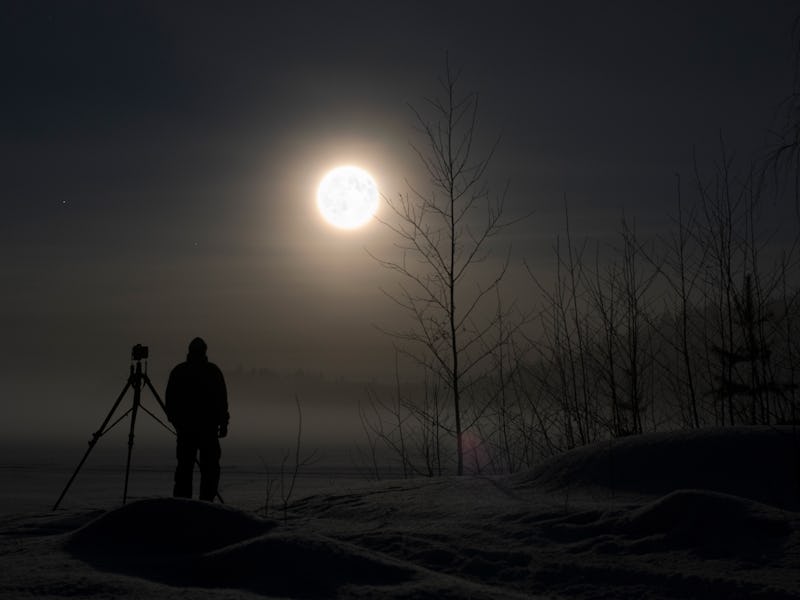Snow Moon: Watch February's only Full Moon next week
The aptly named Snow Moon will shine bright in the icy skies.

February is so short a month that any astronomical milestone means a lot. So make sure to go outside, even in the cold, to check out the Snow Moon.
Our nearest big celestial neighbor will be at its best on February 16, showing off its winter glow. While it reaches its peak illumination during daylight hours in the United States, you will have plenty of time to watch the nearly Full Moon during the long nights before and after.
What is the Snow Moon?
February’s Full Moon is called the Snow Moon, the Storm Moon, the Bony Moon, or the Hunger Moon, which all refer to the difficult weather and food scarcity that Native Americans historically faced during this month.
Various North American tribes have different names to describe February’s Moon. Some of their Moon monikers became more widely known after the Old Farmer's Almanac began publishing weather and astronomical forecasts in the 1930s for newer American settlers.
The Snow Moon is meant to reflect that February tends to be the United States’ snowiest month. That precipitation estimate has been backed up with data from the National Weather Service, the Almanac says today.
“In the 1760s, Captain Jonathan Carver, who had visited with the Naudowessie (Dakota), wrote that the name used for this period was the Snow Moon, ‘because more snow commonly falls during this month than any other in the winter’,” the Almanac adds of its decision to use the Snow Moon moniker for February’s Full Moon.
Depending on your culture and world location, however, you may have different associations for the February Full Moon.
NASA diagram showing how the orbital position affects the Moon phases.
How to see the February 2022 Full Moon
The Full Moon will reach its peak at 11:57 a.m. Eastern on Thursday, February 17 — after it’s already set in the United States — but it will still be viewable at night, rising at 6 p.m. and reaching its highest point around midnight. Moreover, the moon appears full for about a day before and a day after it reaches its peak.
February is a great month to see the Full Moon because it stays up all night, and given that nights are long in February, you’ll have some extra time to watch the show.
How much brighter is the Moon during a Full Moon?
A Full Moon happens when the Moon is directly opposite the Sun, with the Earth in between. The Sun’s light passes around our planet and shines directly on the entire face of the Moon. (From the Moon’s perspective, Earth is completely in shadow.)
The Full Moon is six times brighter than a Half Moon. The Full Moon shines at an average magnitude of -12.92, which is brighter than any other object in the sky except the Sun. A full-phase Moon easily outshines Sirius, the brightest star in the sky at -1.46. For comparison, most people can see stars as dim as magnitude 6 in dark sky conditions.
When is the next Full Moon?
The Moon’s cycle does not align with the Gregorian calendar that most of the world uses, including in the United States. A full “lunar year” of 12 Moons is 354 days, while a typical Earth year (a complete near-circle around the Sun) is just over 365 days.
This year there will be 12 Full Moons, although in some calendar years you can squeeze in 13. That last happened in the year 2020.
The next Full Moon will be the Worm Moon on March 18 at 3:17 a.m. Eastern, just days before spring begins in the northern hemisphere.
This article was originally published on